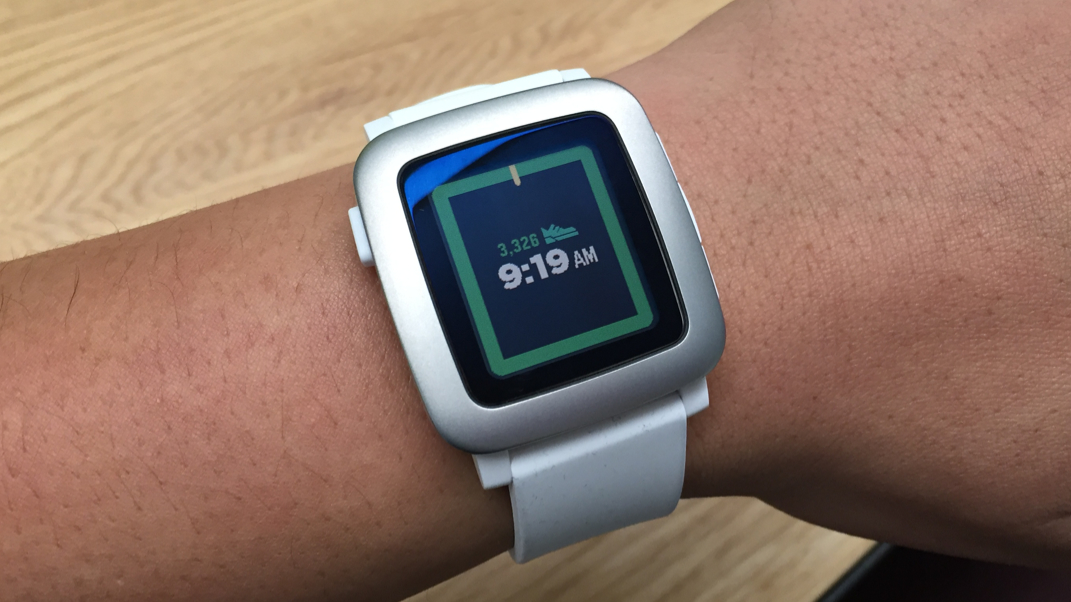Pebble Time update sharpens Health and messaging

Pebble Time owners, there are plenty of reasons to be excited about its latest firmware update, which adds a few improvements to the watch's fitness tracking and messaging capabilities.
Pebble Health, the fitness tracking software built into Pebble Time that can seamlessly track steps and sleep, is now more accurate. That's good and all, but what's better is that you'll soon be able to load Health-enabled watchfaces into your Pebble.
Simply put, Pebble Health is a really useful tool that's buried too deeply in the current user interface. So, the new-found ability to display metrics right next to the time, like your daily step count, is much welcomed.
The Pebble Health API has been updated to allow clever creators to whip up their own watchfaces with metrics gathered from the tracking app. We've only had a peek at one called Stride (pictured above), but it's likely that the near future will bring us more detailed watchfaces that can compete with the likes of the upcoming Fitbit Blaze.

Better messaging
Pebble has also made messaging straight from the wearable a bit easier. If you're an iOS user, the update brings along a new option to respond to messages with custom replies. However, only AT&T customers can currently partake in this feature.
Getting back to a text with, "Hey Jen, I'm in the checkout line," always beats out stale, canned replies, like, "I'll get back to you as soon as I am able."
The update brings along a few goodies for Android phones, too. If you can't take a call, you can now reply with a voice recording, emoji, or, like iOS users, you can just send a customized text reply.
Sign up for breaking news, reviews, opinion, top tech deals, and more.
This expanded messaging functionality is coming to Pebble Time-series watches, and, thankfully, owners of the first generation of Pebble can take advantage of it, too.
...and other helpful tweaks
"Watch-only" mode kicks in when the battery in the Pebble Time gets dangerously low, and, you guessed it, it reduces its functions to that of a simple wristwatch. But now the mode has been given a minor visual refresh, allows for more time (a few hours more, according to Pebble) to find a charger, and keeps your set alarms ticking.
Another improvement worth noting are the speed boosts for Pebble Time, Pebble Time Steel and Pebble Time Round. They are already pretty snappy, especially compared to the original Pebble, but the added zip will keep these smartwatches going well into the future.
- Pebble Time punched its way into our list of best smartwatches

Cameron is a writer at The Verge, focused on reviews, deals coverage, and news. He wrote for magazines and websites such as The Verge, TechRadar, Practical Photoshop, Polygon, Eater and Al Bawaba.